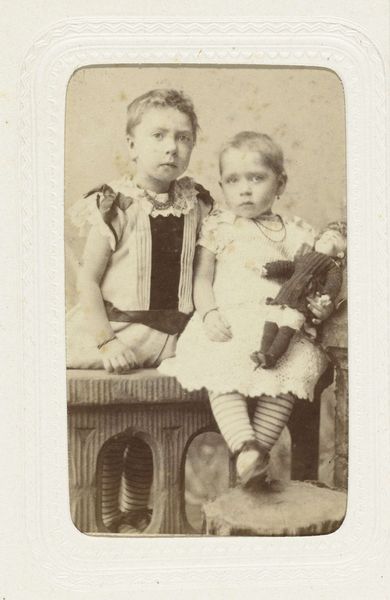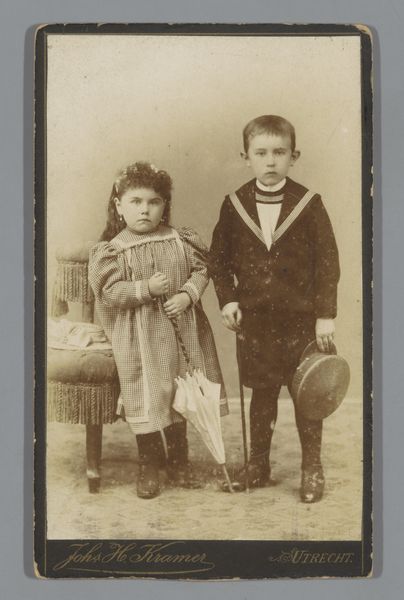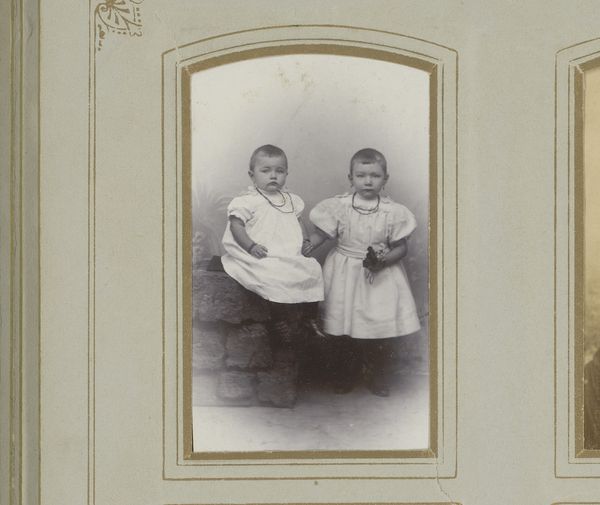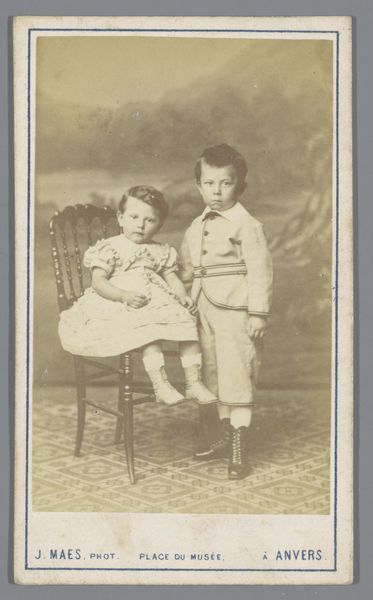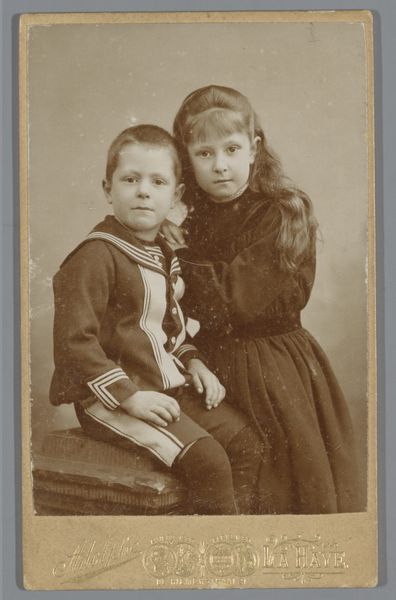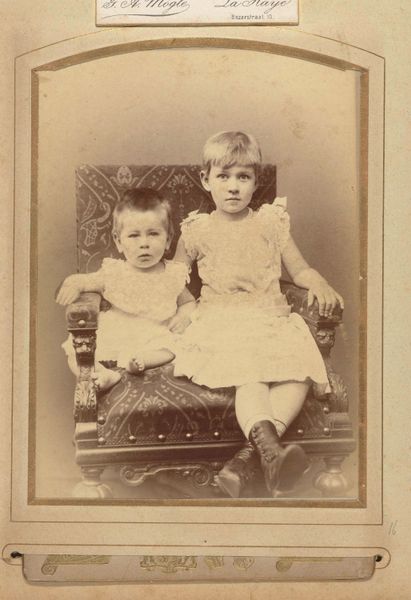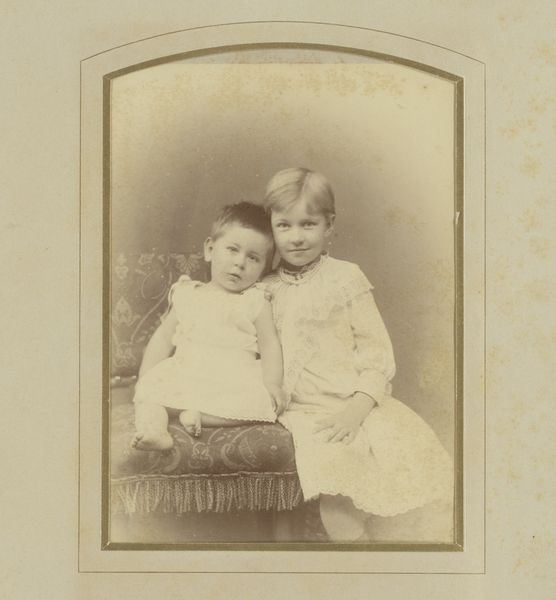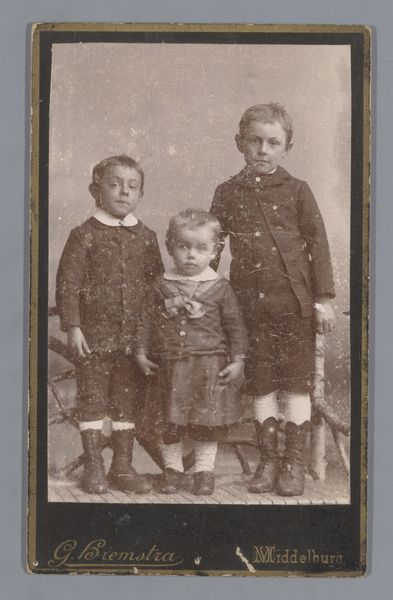
photography, gelatin-silver-print
#
portrait
#
photography
#
historical photography
#
group-portraits
#
gelatin-silver-print
Dimensions: height 102 mm, width 63 mm
Copyright: Rijks Museum: Open Domain
Curator: Here we see a gelatin silver print by Cornelis Johannes Steenbergh, dating from 1889 to 1890, titled “Portrait of two unknown children.” It presents a muted palette, all soft browns and creams. Editor: The way the light catches those fabrics is remarkable, creating texture despite the faded tone. I immediately notice the contrast between the girl's lighter clothing and the boy’s darker attire—an intriguing choice for a formal portrait. Curator: Looking at the context of photographic portraiture at the time, this image is compelling because it speaks to how class and status were represented in the late 19th century. The clothing is clearly not everyday wear. This tells us much about the children's social environment. Editor: Yes, the clothing and stiff poses signal a particular self-awareness. And consider how Steenbergh directs our gaze. He skillfully uses chiaroscuro, highlighting the children's faces, drawing us into their world. Curator: Precisely. Furthermore, understanding Steenbergh's commercial practice enriches our view. Photographic studios provided affordable portraits to a burgeoning middle class. Therefore, it makes the access to a 'painterly aesthetic' a matter of economic process. Editor: Absolutely. One could consider that their facial expressions convey an unusual seriousness for children—a gravity perhaps instilled by the very act of being photographed, knowing they were participating in a kind of posterity. Curator: Indeed, what were they told, how many takes did they take? All of this speaks to the labour in studio practice, as well as in child rearing practices. This piece really pulls back the curtain to a family’s social positioning at the time. Editor: Examining its formal components allows a contemporary reading that speaks to us beyond the documentary representation of this historic photograph. It leaves me pondering about the children in the photo, beyond the photograph itself. Curator: For me, this work makes the argument that photography as an industrial development has everything to do with new artistic possibility. I find this point still quite resonant. Editor: It does leave a lingering presence; there's a vulnerability and a composure at once, that allows us an encounter that crosses centuries.
Comments
No comments
Be the first to comment and join the conversation on the ultimate creative platform.




